Road bikes, especially those with lightweight carbon frames like the Trifox Carbon Road Bike Frame, are precision machines built for speed and efficiency. But carbon fiber, while strong and responsive, requires careful handling to avoid damage. Whether you’re a daily commuter or a weekend racer, here’s how to protect your road bike and keep it performing like new for years.
1. Clean It Regularly
Dirt, grime, and road salt aren’t just unsightly—they can corrode components and wear down surfaces. After every ride, wipe down the frame with a damp cloth, and use a gentle bike-specific cleaner for deeper cleans. Avoid high-pressure hoses, which can force water into bearings or crack carbon fiber if aimed directly at joints.
2. Store It Properly
Carbon frames are tough but not indestructible. Store your bike in a cool, dry place away from direct sunlight (UV rays can degrade resin over time). Use a sturdy bike stand or wall mount to prevent accidental falls. If storing long-term, relieve tension on the chain and tires to reduce stress on components.
3. Avoid Impacts
Carbon excels at absorbing road vibrations but is vulnerable to sharp impacts (e.g., potholes, curbs, or rough handling). Inspect your frame after crashes or hard hits for cracks, chips, or delamination. Even small damage can compromise structural integrity. For added protection, consider frame-safe accessories like silicone protectors on chainstay edges.
4. Check Bolts and Components
Loose bolts can lead to misaligned parts or catastrophic failures. Use a torque wrench to ensure all bolts (stem, seatpost, derailleur hanger) are tightened to the manufacturer’s specifications. Over-tightening carbon parts can crush the material, so follow guidelines carefully.
5. Use Protective Gear
Invest in frame protection film or neoprene sleeves for high-risk areas like the downtube, chainstays, and fork. These shields guard against scratches from gravel, chain slap, or transport mishaps. For Trifox carbon frames, which prioritize weight savings and stiffness, a little extra protection ensures aesthetics and performance stay intact.
6. Transport with Care
Remove the wheels and use a padded bike bag when traveling. Never toss your bike into a car or rack without securing it—carbon frames can crack if jostled against hard surfaces.
7. Schedule Professional Inspections
Even if your bike seems fine, have a mechanic inspect the frame and components annually. They’ll spot hidden issues like hairline cracks or bearing wear before they become costly repairs.
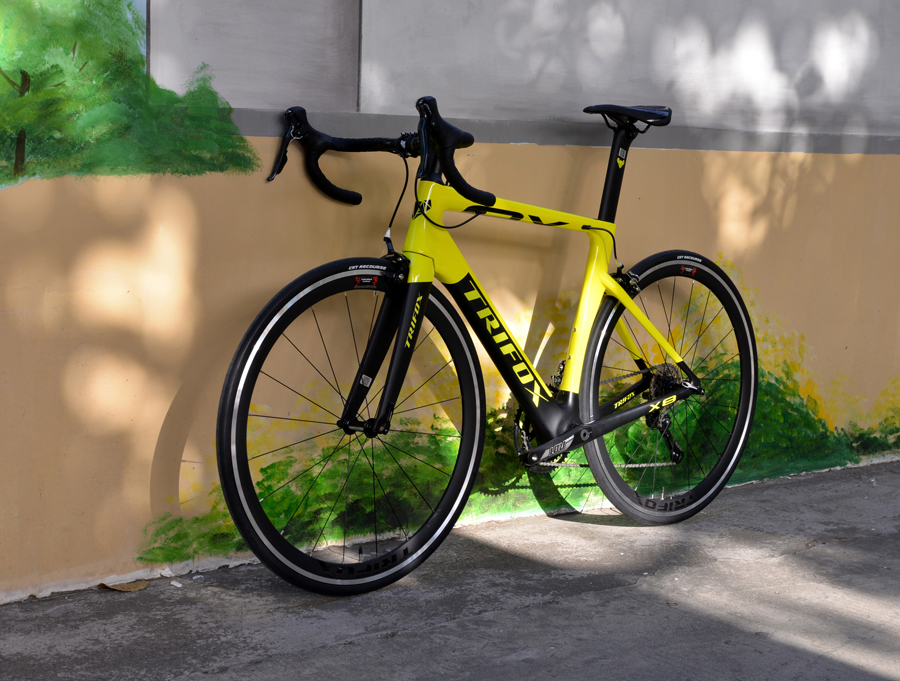
Final Tip: Start with a Quality Frame
A durable carbon frame, like Trifox’s models, is engineered to withstand the demands of road riding while offering crash replacement warranties for peace of mind. Pair it with smart maintenance habits, and your bike will reward you with miles of smooth, reliable performance.
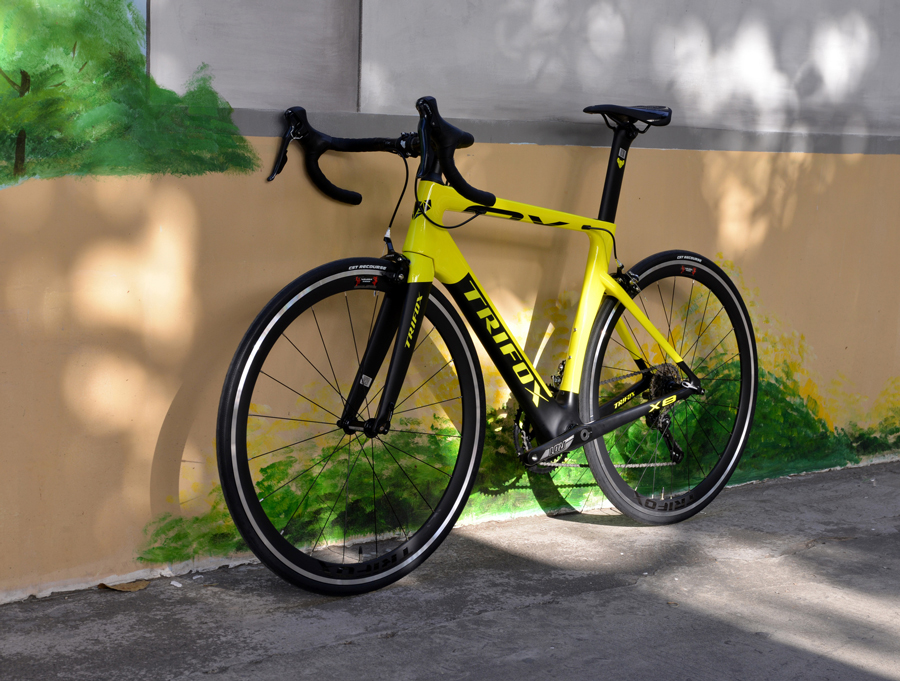
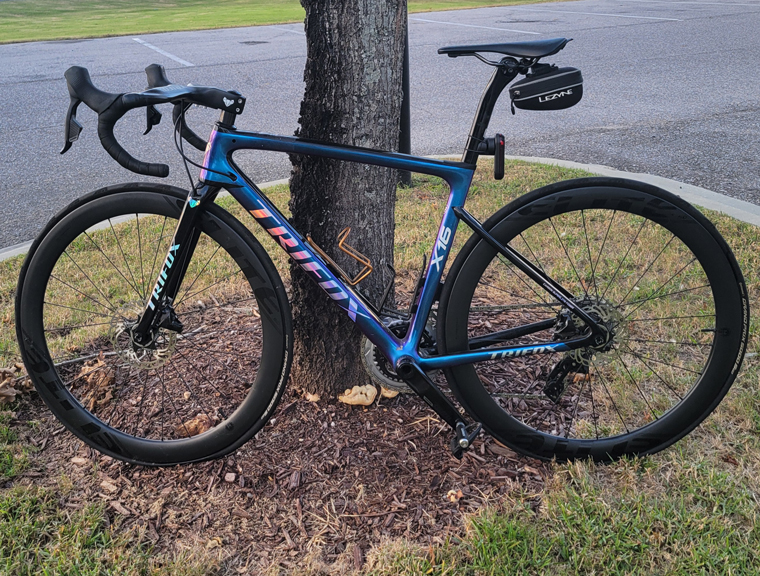
The question of how many gears a road bike “should” have doesn’t have a one-size-fits-all answer. From vintage 5-speed setups to modern 12-speed electronic groupsets, gear counts have evolved dramatically. The right number depends on your riding style, terrain, and budget. Let’s break down the factors to help you find your ideal setup.
The Evolution of Speed
Road bikes once topped out at 10 speeds, but today’s drivetrains offer up to 12 or even 13 cogs. More gears mean smaller jumps between ratios, letting you maintain optimal cadence (pedaling rhythm) on rolling terrain or long climbs. However, more isn’t always better—complexity, weight, and cost increase with each added cog.
Key Considerations
1. Rider Needs: Competitive cyclists often prefer 11- or 12-speed systems for seamless shifting under load. Casual riders or commuters might prioritize simplicity with 8-10 speeds.
2. Terrain: Hilly routes demand wider gear ranges. A compact chainset paired with an 11-34T cassette (common in 11-speed setups) offers climbing ease without sacrificing top-end speed.
3. Maintenance: More gears mean tighter tolerances. A 9- or 10-speed drivetrain is easier to adjust and cheaper to replace.
The Sweet Spot: 11-Speed Dominance
For most road riders, 11-speed strikes a balance. It provides ample range (e.g., 11-30T or 11-34T cassettes) and smooth transitions between gears. Brands like Shimano 105, SRAM Rival, and Campagnolo Centaur offer reliable mid-tier 11-speed groupsets that blend performance and affordability.
When Less is More
Beginners or budget-conscious riders might opt for 8-10 speeds. These systems are robust, cost-effective, and sufficient for flat to moderate terrain. Plus, wider gear spacing can reduce shifting frequency, which is less mentally taxing on long rides.
Cutting-Edge: 12-Speed and Beyond
High-end 12-speed groupsets (Shimano Dura-Ace, SRAM Red) cater to racers and tech enthusiasts. Hyper-precise shifting and expanded gear ranges maximize efficiency, but they come at a premium price—and not all frames/wheels are compatible.
Trifox's Approach: Versatility Meets Value
Trifox road bikes, offer customizable builds to match your gear preferences. Whether you prioritize the crispness of 11-speed Shimano or the simplicity of a 9-speed commuter setup, their ultralight carbon frames adapt to your needs without compromising durability.
Final Shift
Your ideal gear count hinges on where and how you ride. More speeds deliver precision, but simplicity has its perks. Test different setups if possible, and remember: the best drivetrain is the one that keeps you pedaling—and smiling—mile after mile.
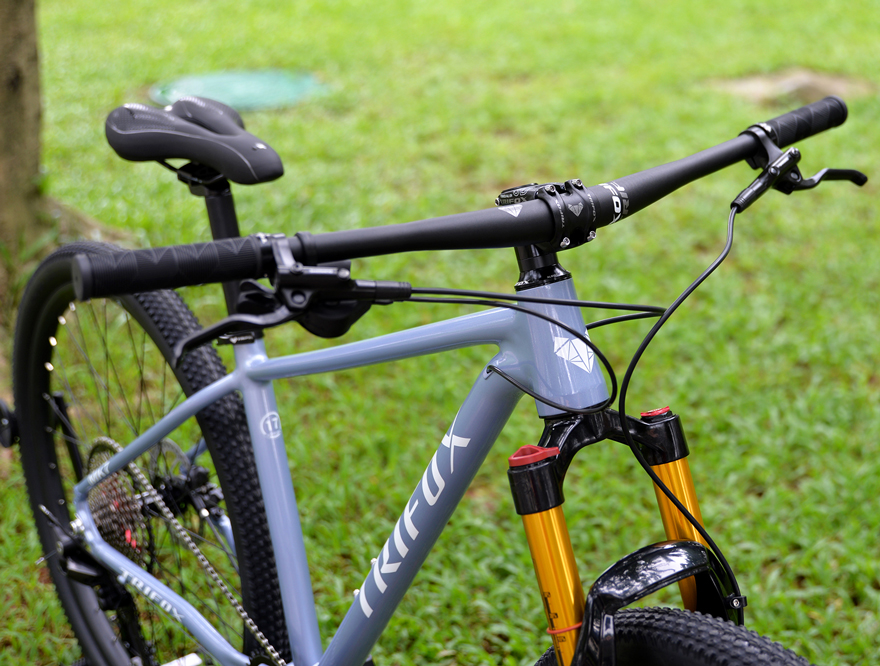
When it comes to mountain biking, finding the right balance between cost and performance can feel like a never-ending quest. Enter the 29er alloy hardtail frame—a design that promises the ruggedness needed for aggressive trails without breaking the bank. But does it live up to the hype?
THE CASE FOR ALLOY: AFFORDABILITY MEETS PERFORMANCE
Carbon fiber often steals the spotlight for its featherweight appeal, but alloy frames like the MK7 offer a compelling alternative. Aluminum provides a robust foundation at a fraction of the cost, making it ideal for riders who prioritize value.
The MK7's ultralight construction shaves weight without compromising strength, bridging the gap between budget-friendly and high-performance. For beginners or seasoned riders watching their wallets, alloy delivers resilience where carbon might falter—think rock strikes, crashes, or rough trail abuse.
TRAIL-READY TOUGHNESS: BUILT TO LAST
Durability is where alloy truly shines. The MK7’s hydroformed tubing reinforces critical stress points, ensuring the frame withstands repeated punishment from roots, drops, and technical climbs. Pair this with the modern 148mm Boost rear spacing, which increases wheel stiffness and compatibility with wider hubs, and you’ve got a setup that combats flex during hard cornering and accelerates efficiently. This isn’t a frame that coddles; it’s built to push limits, making it a reliable partner for everything from flowy singletrack to gnarly descents.
29ER WHEELS: THE TRAIL-SMOOTHING ADVANTAGE
The 29-inch wheels paired with this hardtail design are a game-changer. Their larger diameter rolls over obstacles with ease, maintaining momentum on climbs and reducing fatigue over long rides. While hardtails lack rear suspension, the MK7’s rigid rear triangle ensures direct power transfer, letting you tackle climbs with urgency. The 29er’s stability also complements the frame’s durability, creating a bike that feels planted and predictable when the trail gets rowdy.
HARDTAIL SIMPLICITY: LESS MAINTENANCE, MORE RIDING
Hardtails eliminate the complexity (and cost) of rear suspension, offering a lighter, more responsive ride. The MK7 leans into this ethos, with a clean design that’s easier to maintain and repair. Fewer moving parts mean fewer headaches—perfect for riders who want to spend less time tuning and more time riding.
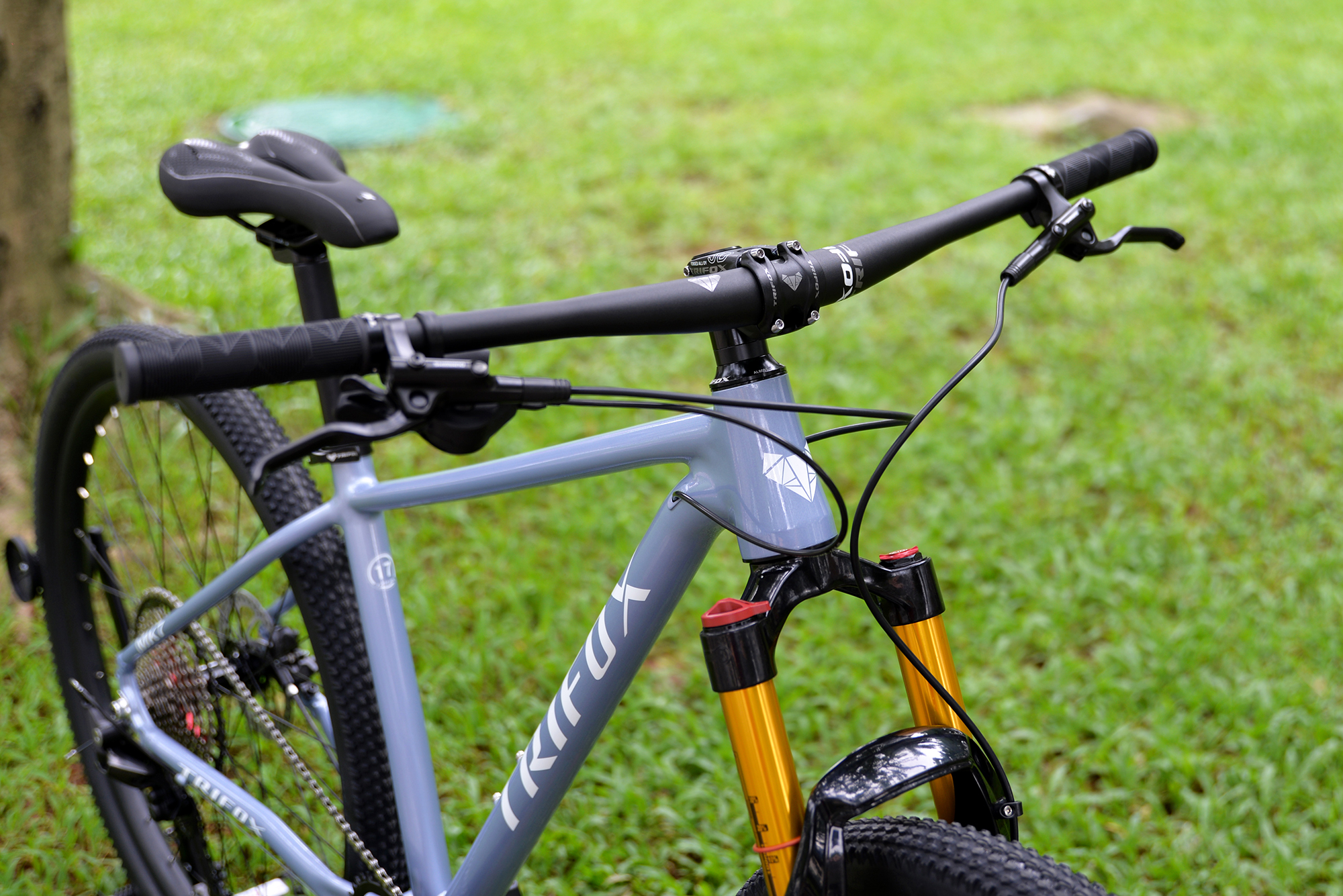
VERDICT: THE BEST OF BOTH WORLDS?
So, is a 29er alloy hardtail frame the perfect blend of affordability and durability? For most riders, the answer leans yes. The Trifox MK7 exemplifies this balance, offering a lightweight yet tough platform that thrives on diverse terrain. It's a smart choice for those seeking a capable, low-maintenance bike that won't empty their wallet.

The cycling world is evolving, and disc brakes are now the gold standard for road bikes. Once reserved for mountain bikes, this technology has revolutionized road cycling, offering unparalleled performance and safety.
1. All-Weather Reliability
Disc brakes excel in diverse conditions. Unlike rim brakes, which lose grip in rain or mud, disc rotors provide consistent stopping power. This reliability boosts confidence on wet descents or gritty roads, making them a must-have for commuters and racers alike.
2. Wider Tire Compatibility
Modern road bikes prioritize comfort and speed, embracing wider tires (28mm+). Disc brakes eliminate rim wear, allowing frames like Trifox’s carbon models to accommodate larger tires without compromising clearance. The result? A smoother ride and improved traction.
3. Precision Control
Disc brakes offer superior modulation, letting riders fine-tune braking force. This precision prevents skidding and reduces fatigue on long rides, enhancing safety during technical maneuvers or crowded group rides.
4. Aerodynamic Advantage
Disc-specific frames, such as Trifox’s carbon road bike frames, streamline brake integration. Without rim calipers, designers optimize tube shapes for aerodynamics, cutting through wind with minimal drag—ideal for speed seekers.
5. Long-Term Durability
Disc systems reduce rim stress, prolonging wheel life. Paired with robust carbon frames, cyclists enjoy lighter, sturdier builds that withstand rigorous use, from climbs to sprints.

Disc brakes aren't a trend—they’re the future. As cyclists demand versatility and performance, brands like Trifox Bike deliver with disc-ready carbon frames that merge innovation and agility. Ready to upgrade? Explore Trifox’s cutting-edge options here and join the revolution.
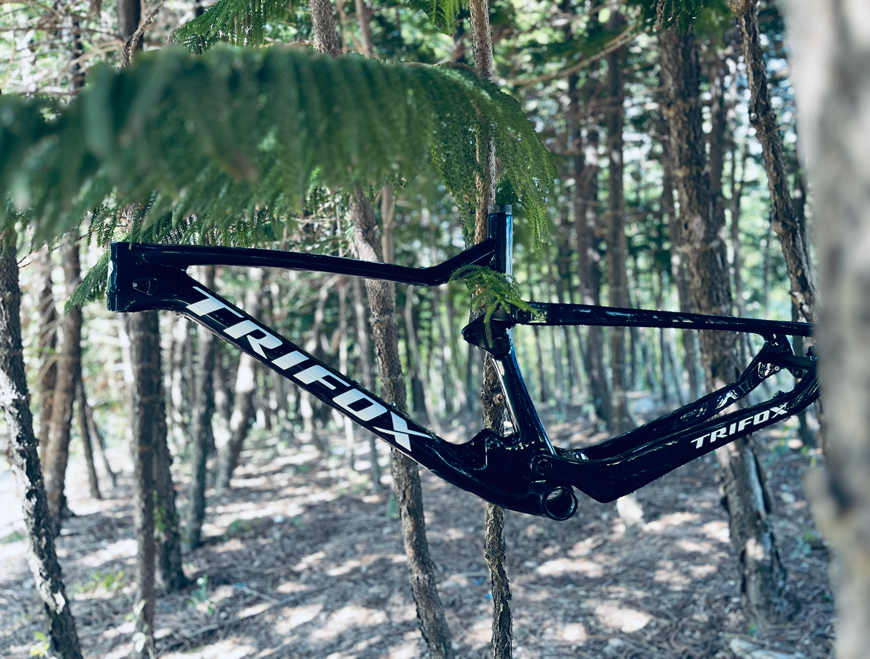
The age-old debate between hardtail (front suspension only) and full-suspension mountain bikes boils down to one question: What kind of rider are you? Let’s dissect the pros, cons, and ideal use cases for both setups to help you decide—and explore how brands like Trifox cater to diverse preferences.
Hardtail (Without Rear Suspension)
Pros:
- Lightweight: Fewer parts mean easier climbing and faster acceleration.
- Lower Cost: Affordable to buy and maintain (no rear shock or pivot bearings).
- Efficiency: Direct power transfer makes pedaling feel responsive, ideal for smooth trails or XC racing.
- Simplicity: Less maintenance and easier DIY repairs.
Cons:
- Rough Ride: Rear impacts are absorbed solely by your legs, leading to fatigue on technical terrain.
- Traction Limits: Less control on loose or rocky descents.
Full-Suspension
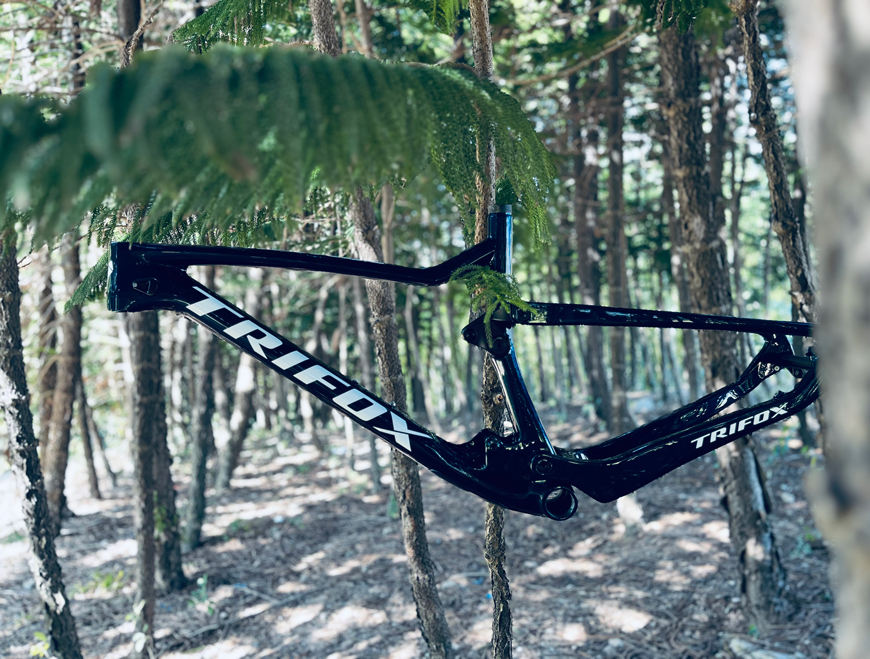
Pros:
- Comfort & Control: Rear shocks smooth out bumps, reducing fatigue and improving grip on chunky trails.
- Versatility: Confidently tackle downhill, enduro, or all-day adventures.
- Speed: Maintain momentum through rough sections.
Cons:
- Weight & Cost: Heavier frame and higher upfront/maintenance costs.
- Complexity: More moving parts mean more potential for mechanical issues.
Who Should Ride What?
- Choose a Hardtail If: You prioritize budget-friendly efficiency, ride smoother trails, or love climbing. Models like Trifox’s hardtails excel here, blending lightweight frames with trail-ready geometry.
- Choose Full-Suspension If: You crave technical descents, endurance rides, or park laps. Trifox’s full-suspension bikes offer balanced travel and durability for aggressive terrain.
Key Considerations
1. Terrain: Rocks, roots, and drops? Full-suspension shines. Pavement or flow trails? Save weight with a hardtail.
2. Budget: Hardtails cost less upfront and long-term.
3. Skill Level: Beginners may appreciate a hardtail’s simplicity; advanced riders often leverage full-squish capabilities.
There's no “better” option—only what's better for you. Hardtails reward efficiency and simplicity, while full-suspension bikes unlock technical prowess and comfort. Test both if possible, and consider Trifox’s range to match your riding style. Whether you're chasing KOMs or sending drops, the right suspension setup ensures every ride feels like freedom.
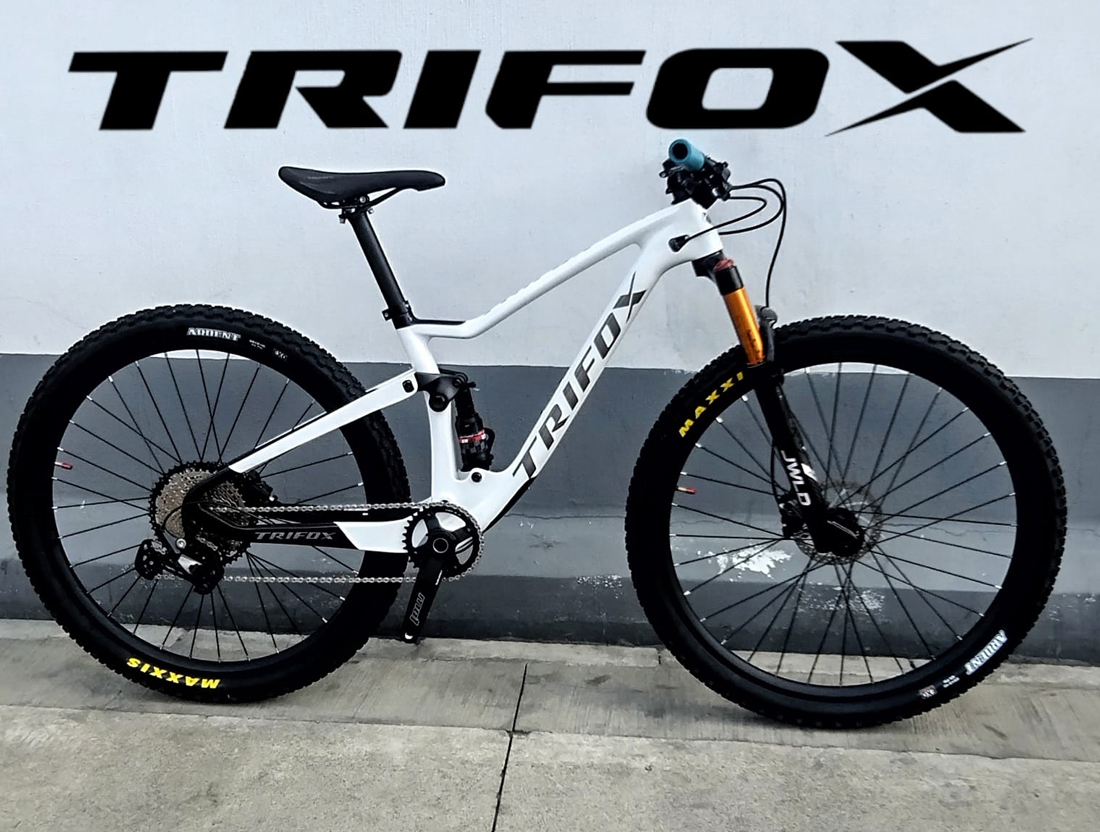
A full-suspension mountain bike is a significant investment, and riders often wonder: How long will it last? While there’s no one-size-fits-all answer, factors like usage, maintenance, and component quality play key roles. Let’s dive into durability expectations and how to maximize your bike’s lifespan—with a nod to robust options like Trifox’s full-suspension models.
Lifespan Factors
1. Frame Construction: High-quality aluminum or carbon frames (like Trifox’s) can last 5–10+ years with proper care. Stress cracks or impact damage are rare but possible in extreme conditions.
2. Suspension Components: Rear shocks and fork seals require regular servicing (annually or every 100–200 ride hours). Neglect can lead to leaks or degraded performance in 2–4 years.
3. Drivetrain & Bearings: Chains, cassettes, and pivot bearings wear fastest. Replace chains every 500–1,000 miles and pivot bearings every 1–2 years, depending on riding intensity.
4. Wheels: Rims and hubs endure constant abuse. Quality wheelsets last 3–5 years, but hard impacts or poor maintenance can shorten this.
Maintenance Matters Most
Regular cleaning, lubrication, and timely part replacements are critical. For example:
- Clean suspension stanchions after muddy rides to prevent seal damage.
- Grease pivot bolts and bearings annually to combat corrosion.
- Check torque specs on frame bolts to avoid stress fractures.
Signs It's Time to Retire Your Bike
- Frame Damage: Cracks, dents, or creaking noises signal structural failure.
- Irreparable Suspension: If rebuild kits can’t fix a soggy shock or fork, replacement is cheaper than constant repairs.
- Outdated Standards: Older bikes may lack compatibility with modern components (e.g., thru-axles, 1x drivetrains), making upgrades impractical.
Trifox Full-Suspension Bikes: Built to Endure
Models like those from Trifox prioritize durability with premium carbon frames, reliable suspension linkages, and modern geometry. Their designs balance lightweight performance with trail-tough resilience, ensuring longevity for riders who maintain their bikes diligently.
Maximizing Your Bike's Life
- Ride Within Limits: Avoid overly aggressive terrain if your bike isn’t built for it.
- Store Indoors: Protect against rust and UV damage.
- Upgrade Strategically: Swap worn parts before they compromise other components.
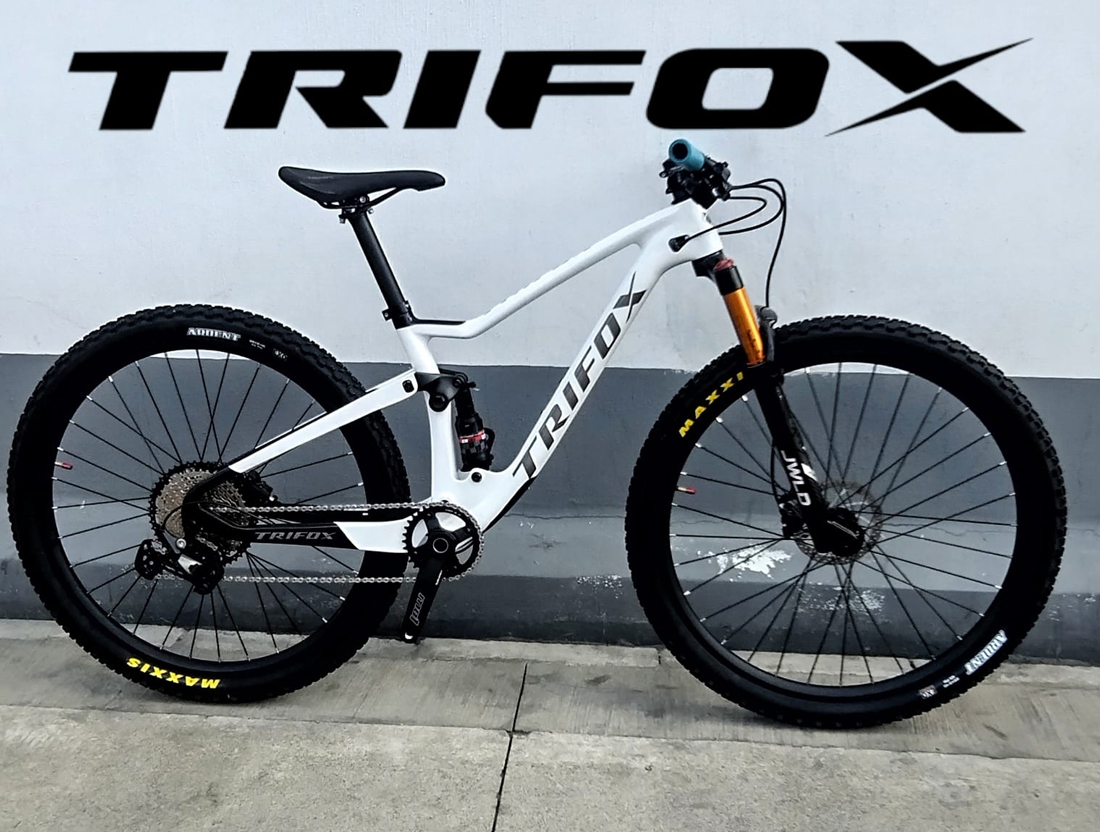
A well-maintained full-suspension bike can last a decade or more, but its “usable life” depends on how hard you ride and how proactively you care for it. Brands like Trifox offer frames engineered to endure, making them a smart choice for riders seeking longevity.
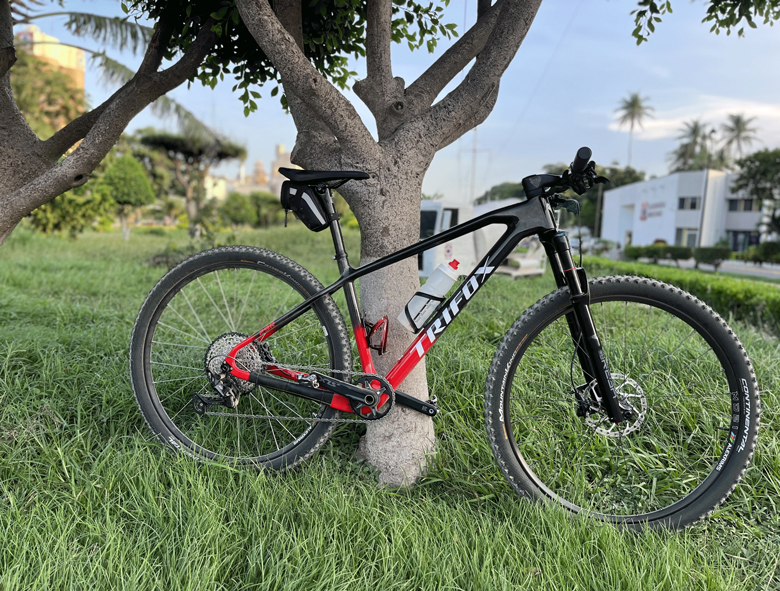
Mountain biking technology constantly evolves, and one debate among riders is whether to choose a frame with full internal cable routing.
What Is Full Internal Cable Routing?
Trifox hides brake and derailleur cables (or housing) inside the frame, creating a clean, streamlined appearance. Unlike traditional setups where cables run externally, Trifox routes them through the frame’s tubes, often exiting near components like the stem or rear derailleur.
Pros of Trifox
Aesthetics & Aerodynamics: A clutter-free frame looks sleek and may reduce drag marginally, though this matters more for racers.
Protection: Cables are shielded from mud, rocks, and trail debris, reducing wear and corrosion.
Durability: Less exposure means fewer snags on branches or accidental tugs during technical rides.
The Trifox SDY21 Frame: A Case Study
The Trifox SDY21 exemplifies Trifox done right. This lightweight carbon hardtail pairs Boost spacing stiffness with internal routing that’s thoughtfully designed. The cables enter through the headtube, minimizing friction points, and the carbon construction ensures durability without weight penalties. For riders prioritizing a clean build, it’s a compelling option.
Who Should Consider Trifox?
Weight-Weenies & Racers: The SDY21's minimalistic design shaves grams while maintaining performance.
Low-Maintenance Riders: If you prefer professional tune-ups and value long-term cable health, Trifox suits you.
Aesthetic Enthusiasts: Love a bike that looks as sharp as it rides? Internal routing delivers.
Who Should Skip It?
DIY Mechanics: If you love tweaking your bike trailside, external routing offers easier access.
Budget-Conscious Riders: Trifox frames often cost more, and installation might require extra tools.
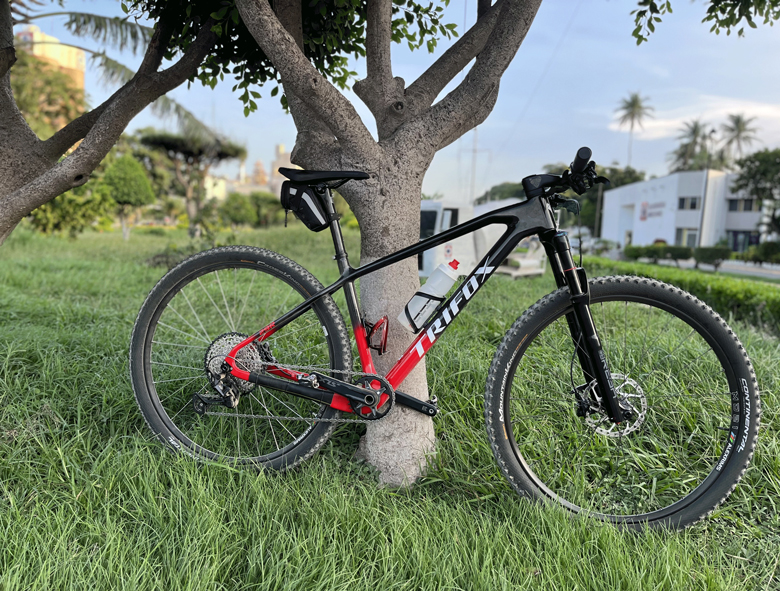
Full internal cable routing isn't a must-have, but it’s a worthy upgrade for riders valuing aesthetics, protection, and modern design. The Trifox SDY21 frame balances these perks with practical engineering, making it ideal for those ready to embrace Trifox’s trade-offs. Before deciding, weigh your maintenance habits, budget, and riding style—because the best frame is the one that matches your trail needs.

For cyclists obsessed with shaving seconds off their personal bests, every component choice matters. But does upgrading to a carbon aero frame deliver the speed gains it promises? Let’s break down the pros, cons, and key considerations.
Why Carbon Aero Frames Shine
Carbon aero frames are engineered for speed. Their lightweight construction enhances acceleration and climbing efficiency, while aerodynamic shapes slice through wind resistance—critical during time trials or flat-road sprints. Studies suggest aero frames can reduce drag by up to 30%, translating to measurable time savings over long distances. For racers or triathletes, these gains justify the premium price tag.
The Trade-Offs
Cost is the biggest hurdle. High-quality carbon frames, can cost 2–3x more than aluminum alternatives. Durability concerns also linger; carbon is strong but prone to damage from impacts, though modern manufacturing has improved resilience. Additionally, stiffness optimized for power transfer might sacrifice comfort on rough terrain, a consideration for endurance riders.
Who Should Invest?
If you're competing or prioritize marginal gains, a carbon aero frame is a worthy upgrade. Casual riders, however, may find the benefits negligible compared to the cost. For budget-conscious speed seekers, TrifoxBike offers balanced options, blending performance and value.
Maximizing Your Investment
Proper maintenance is key. Regularly inspect for cracks, avoid overtightening components, and store your bike carefully. Pair your frame with aero wheels and a optimized riding position to unlock full potential.
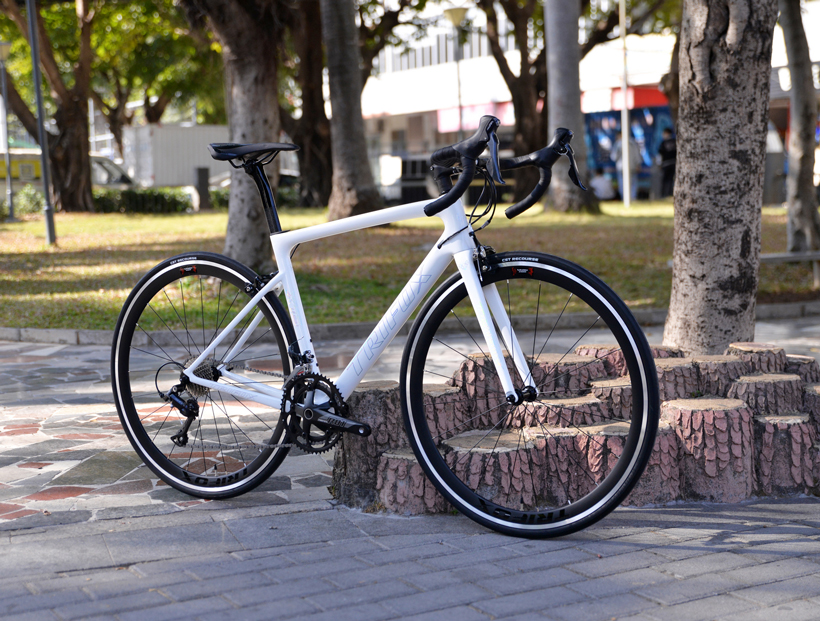
For serious speed enthusiasts, a carbon aero frame is a game-changer. Its blend of weight savings and aerodynamics offers tangible advantages where seconds count. Explore TrifoxBike’s range to find a frame that aligns with your goals—and ride faster, smarter, and farther.

For cyclists chasing every second, the allure of a carbon aero road bike frame is undeniable. Sleek, wind-cheating designs promise speed gains—but with premium price tags, are they worth it?
Why Carbon Aero Frames?
Carbon aero frames, like Trifox’s X8, are engineered to minimize drag while maximizing stiffness. Key benefits include:
Aerodynamics: Tube shapes and frame profiles slice through wind, saving watts at high speeds.
Lightweight: High-quality carbon shaves grams without sacrificing strength.
Responsive Ride: Optimized stiffness ensures efficient power transfer during sprints or climbs.
For racers and time-trialists, these features can translate to tangible performance gains—think seconds saved over miles.
The Cost Consideration
Carbon aero frames aren't cheap. The Trifox X8 sits in the mid-to-high range, offering pro-level engineering at a fraction of boutique brand prices. However, budget-conscious riders might question if the speed boost justifies the cost.
Ask yourself:
How competitive are you? Marginal gains matter most in races or timed events.
Do you ride long distances? Aero savings compound over miles, reducing fatigue.
Is your current bike holding you back? Upgrading a heavy or outdated frame can unlock new PRs.
Durability & Practicality
While carbon is durable, aero frames can be less forgiving on rough roads compared to endurance-focused designs. The X8’s V-brake compatibility adds versatility, but disc brakes (not featured here) offer better stopping power in wet conditions.
Who Should Invest?
Racers: Every watt saved counts.
Tech-Savvy Enthusiasts: Love cutting-edge gear? The X8’s blend of aerodynamics and classic V-brake compatibility offers a unique edge.
Upgraders: Pairing the frame with high-end components (wheels, groupset) maximizes ROI.

If speed is your obsession, a carbon aero frame like the Trifox X8 is a worthy investment. Its balance of aerodynamics, weight, and stiffness caters to riders hungry for performance. For casual cyclists, the cost may outweigh the benefits—but for those chasing podiums, it's a game-changer.
























































